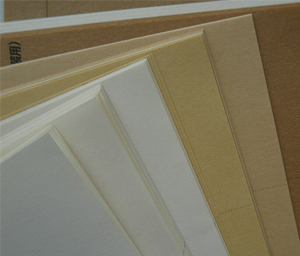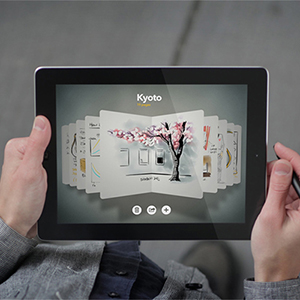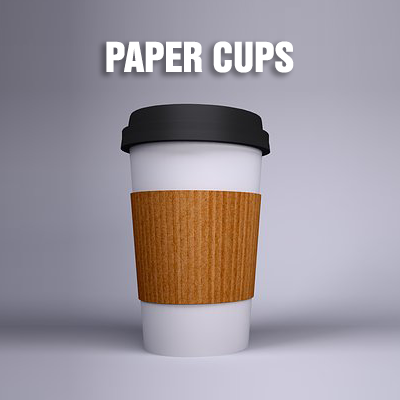AI Vision in Printing: Redefining Paperboard Packaging and Print Solutions

Introduction:
Paperboard packaging has long been a cornerstone in the packaging industry, valued for its durability, versatility, and eco-friendly nature. In recent years, advancements in AI machine vision have revolutionized the way paperboard packaging is designed, manufactured, and customized. This article explores the intersection of AI machine vision and paperboard packaging, highlighting the latest trends in customizable designs, print capabilities, and sustainability.
AI Machine Vision in Paperboard Packaging:

AI machine vision has become a game-changer in the realm of paperboard packaging, revolutionizing the way quality control and efficiency are achieved in production processes. These sophisticated systems leverage advanced algorithms and deep learning techniques to meticulously analyze and optimize every facet of packaging design and manufacturing. One of the standout capabilities of AI machine vision is its ability to detect even the minutest defects in paperboard materials with unparalleled precision.
Imagine a scenario where AI-powered inspection systems meticulously scan each sheet of paperboard, identifying imperfections such as creases, tears, or inconsistencies in printing. These systems operate at a level of detail and accuracy that surpasses human capabilities, ensuring that each package that rolls off the production line meets the highest quality standards. Furthermore, AI machine vision doesn't stop at defect detection. It also plays a pivotal role in optimizing the manufacturing processes themselves. By continuously monitoring and analyzing data, AI algorithms can identify areas for improvement, streamline workflows, and enhance overall efficiency. For example, they can adjust printing parameters in real time to maintain color consistency or optimize cutting and folding operations for minimal waste.
The integration of AI machine vision into paperboard packaging production isn't just about catching errors; it's about elevating the entire manufacturing process to new levels of precision and performance. Manufacturers can rely on these systems to deliver consistent, high-quality packaging that meets customer expectations and regulatory requirements. Moreover, the data generated by AI machine vision systems provides invaluable insights into production performance and trends over time. This data-driven approach enables proactive decision-making, predictive maintenance, and continuous improvement initiatives. Manufacturers can identify patterns, predict potential issues, and fine-tune processes to achieve optimal results.
In essence, AI machine vision has become an indispensable tool in the paperboard packaging industry, driving efficiency, quality, and innovation. Its ability to detect defects with exceptional accuracy, optimize manufacturing processes, and provide actionable insights positions it as a cornerstone of modern packaging production. As technology continues to advance, the role of AI machine vision will only expand, leading to further advancements and improvements in the way paperboard packaging is designed, manufactured, and delivered to consumers.
Customizable Designs and Print Capabilities:

AI machine vision has ushered in a new era of customizable designs and print capabilities in paperboard packaging, catering to the evolving preferences of consumers and businesses alike. One of the standout trends facilitated by AI machine vision is the ability to create highly personalized designs, including options like print graph paper, lined paper printable patterns, and even newsprint-inspired motifs.
The inclusion of print graph paper features reflects a growing demand for packaging that goes beyond mere functionality to offer a unique visual appeal. Customers, especially in sectors like stationery, education, and creative industries, are increasingly seeking packaging solutions that not only protect their products but also serve as an extension of their brand identity. Print graph paper options allow for precise alignment and layout, making them ideal for packaging that requires structured or grid-based designs.
The versatility of paperboard as a packaging material further enhances the potential for innovative printing techniques. AI-driven printing processes leverage advanced algorithms to ensure accuracy and consistency across each package. Whether it's vibrant colors, intricate patterns, or specific graphical elements, AI technology enables manufacturers to achieve stunning results that enhance the overall appeal of the packaging.
Moreover, the integration of AI in print design brings added benefits in terms of real-time adjustments and quality monitoring. Manufacturers can make on-the-fly modifications to printing parameters based on feedback from AI systems, ensuring that each printed package meets the desired aesthetic and functional requirements. This level of adaptability and responsiveness is crucial in today's dynamic market, where trends and customer preferences can evolve rapidly.
In essence, print graph paper capabilities, alongside other customizable designs facilitated by AI machine vision, empower manufacturers to create packaging solutions that not only protect and promote products but also engage and resonate with target audiences. As technology continues to advance, we can expect further innovations in print capabilities, paving the way for even more creative and impactful paperboard packaging designs.
Sustainability and Eco-Friendly Practices:

In addition to customization and print capabilities, AI machine vision contributes to sustainability initiatives within the paperboard packaging industry. Sustainable packaging is a growing priority for consumers and businesses alike, driving innovation in materials and manufacturing processes. AI technology plays a crucial role in optimizing resource utilization, reducing waste, and enhancing recycling capabilities.
Midland Paper Packaging and AI Integration:

Midland Paper Packaging stands out as a trailblazer in the realm of AI integration within the paperboard packaging industry. The company's proactive approach to harnessing AI machine vision technology has paved the way for transformative advancements in packaging solutions. By leveraging AI capabilities, Midland has unlocked a realm of possibilities, ranging from highly customizable designs to precise printing techniques and sustainable practices.
One of the key areas where Midland Paper Packaging shines is in its ability to offer customizable designs that resonate with diverse customer preferences. Through AI-driven processes, the company can create packaging solutions that align with specific branding requirements, product themes, or industry trends. Whether it's incorporating intricate patterns, unique graphical elements, or personalized messages, Midland's AI integration ensures that each package tells a compelling visual story.
| "As the printing and packaging industry continues to embrace cutting-edge technologies like AI machine vision, events like Drupa 2024 stand out as crucial platforms for showcasing the latest innovations and trends. Drupa offers a unique opportunity for industry professionals to explore the future of print technologies, including advancements in customizable designs, sustainable practices, and real-time monitoring enabled by AI. At Drupa 2024, attendees can connect with industry leaders, learn about the latest techniques, and discover how AI is reshaping the landscape of paperboard packaging and graphic communication." |
The precision enabled by AI machine vision is another cornerstone of Midland's packaging prowess. From color accuracy to print alignment, AI-driven printing processes guarantee consistency and quality across every package. This level of precision not only enhances the visual appeal of the packaging but also reflects Midland's commitment to delivering excellence in every aspect of their products.
Furthermore, Midland's focus on sustainability is seamlessly integrated into its AI-powered packaging solutions. The company leverages AI algorithms to optimize material usage, reduce waste, and enhance recyclability without compromising on quality or durability. This environmentally conscious approach aligns with evolving industry standards and reinforces Midland's position as a responsible leader in the packaging landscape.
Midland Paper Packaging's dedication to innovation and environmental responsibility sets a high bar for industry standards. By embracing AI integration, the company not only enhances the functionality and aesthetics of its packaging but also contributes to a more sustainable future. As consumer demands continue to evolve, Midland's proactive stance on AI adoption ensures that it remains at the forefront of innovation, driving positive change in the packaging industry.
Benefits of AI Machine Vision in Paperboard Packaging:
The adoption of AI machine vision in paperboard packaging offers several benefits:
- Improved Quality Control: AI-powered inspection systems detect and address defects in real time, ensuring consistent quality across packaging batches.
- Enhanced Customization: Customers can choose from a wide range of customizable designs and print options, creating unique packaging solutions for their products.
- Sustainability: AI optimization reduces material waste, energy consumption, and environmental impact, aligning with sustainable packaging goals.
- Efficiency and Cost-Effectiveness: Automated processes driven by AI technology streamline production, leading to increased efficiency and cost savings.
- Real-Time Monitoring: AI-enabled systems provide real-time data on production metrics, allowing for proactive decision-making and continuous improvement.
Future Trends and Outlook: Looking ahead, the integration of AI machine vision in paperboard packaging is expected to continue evolving. Future trends may include:
- Smart Packaging Features: AI-powered sensors embedded in packaging for real-time monitoring of product freshness, security, and authenticity.
- Personalized Customer Experiences: AI algorithms analyzing consumer behavior data to tailor packaging designs and marketing messages.
- Sustainability Innovations: Further advancements in eco-friendly materials, recycling technologies, and carbon footprint reduction.
- Collaborative Supply Chains: AI-driven platforms connecting packaging manufacturers, suppliers, and retailers for seamless collaboration and optimization.
- Regulatory Compliance: AI tools ensuring compliance with evolving packaging regulations and standards worldwide.
Conclusion: Innovations in AI machine vision are reshaping the paperboard packaging industry, driving customization, sustainability, and efficiency. Companies leveraging AI technology, such as Midland Paper Packaging, are well-positioned to meet the diverse needs of modern consumers and businesses. As AI continues to evolve, the future of paperboard packaging promises even greater possibilities for innovation, creativity, and environmental stewardship.









